
Towson is an unincorporated community and a census-designated place in Baltimore County, Maryland, United States. The population was 55,197 as of the 2010 census. It is the county seat of Baltimore County and the second-most populous unincorporated county seat in the United States.
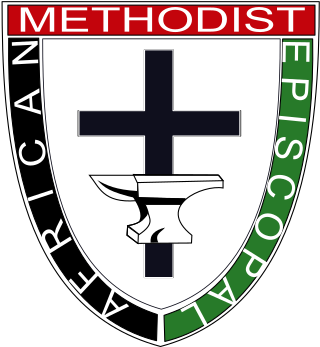
The African Methodist Episcopal Church, usually called the AME Church or AME, is a Methodist Black church. It adheres to Wesleyan-Arminian theology and has a connexional polity. The first independent Protestant denomination to be founded by Black people, AME welcomes and has members of all ethnicities.

Maria Mitchell was an American astronomer, librarian, naturalist, and educator. In 1847, she discovered a comet named 1847 VI that was later known as "Miss Mitchell's Comet" in her honor. She won a gold medal prize for her discovery, which was presented to her by King Christian VIII of Denmark in 1848. Mitchell was the first internationally known woman to work as both a professional astronomer and a professor of astronomy after accepting a position at Vassar College in 1865. She was also the first woman elected Fellow of the American Academy of Arts and Sciences and the American Association for the Advancement of Science.

Baltimore City College, known colloquially as City, City College, and B.C.C., is a college preparatory school with a liberal arts focus and selective admissions criteria located in Baltimore, Maryland. Opened in October 1839, B.C.C. is the third-oldest active public high school in the United States. City College is a public exam school and an International Baccalaureate World School at which students in the ninth and tenth grades participate in the IB Middle Years Programme while students in the eleventh and twelfth grades participate in the IB Diploma Programme.

Wilson College is a private, Presbyterian-related college in Chambersburg, Pennsylvania. Founded in 1869 by two Presbyterian ministers, it was named for its first major donor, Sarah Wilson of nearby St. Thomas Township, Pennsylvania, who gave $30,000 toward the purchase of the land and home of Alexander McClure.
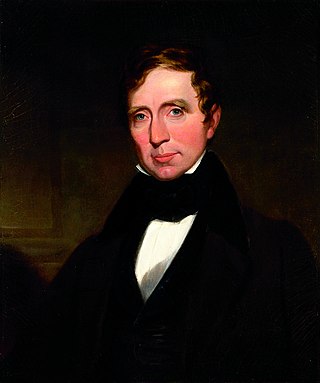
John Emory was an American bishop of the Methodist Episcopal Church, elected in 1832. He is the namesake for Emory University and Emory & Henry College, both Methodist-affiliated American universities.

Beverly Waugh (1789–1858) was an American who was a Methodist pastor, book agent, and Bishop of the Methodist Episcopal Church, elected in 1836.
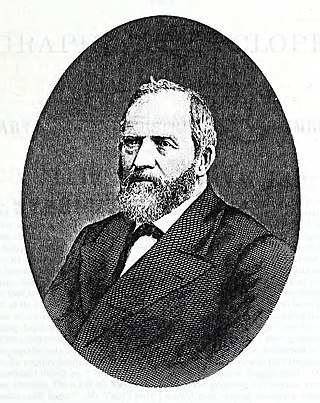
Jacob Tome was an American banker, philanthropist, and politician who died as one of the richest men in the United States. He was the first millionaire of Cecil County, Maryland, and an accomplished philanthropist, giving money to colleges, churches, and schools, including establishing the Tome School.
The following is a timeline of women's colleges in the United States. These are institutions of higher education in the United States whose student population comprises exclusively, or almost exclusively, women. They are often liberal arts colleges. There are approximately 35 active women's colleges in the U.S. as of 2021.
The Genesee Wesleyan Seminary was the name of two institutions located on the same site in Lima, New York.

Thomas S. Baer (1843–1906) was an American jurist who served as a judge on the Supreme Bench of Baltimore City in the United States of America from 1903 until his death in 1906.

Nathan Covington Brooks was an American educator, historian, and poet. Born in West Nottingham, Cecil County, Maryland, Brooks grew up to become the first principal of Baltimore City College, the third oldest public high school in the United States, and the only president of the Baltimore Female College, the first institution of higher education for women in Maryland. He also was the owner of the literary magazine The American Museum in which he published several works of the famed poet Edgar Allan Poe, and the author of several textbooks on classical literature. Brooks died in Philadelphia, Pennsylvania.

The history of The Baltimore City College began in March 1839, when the City Council of Baltimore, Maryland, passed a resolution mandating the creation of a male high school with a focus on the study of English and classical literature. "The High School" was opened later in the same year on October 20, with 46 pupils under the direction of Professor Nathan C. Brooks,(1809-1898), a local noted classical educator and poet, who became the first principal of a new type of higher institution in the developing public education system in the city begun in 1829. It is now considered to be the third oldest public high school / secondary school in the nation. In 1850, the Baltimore City Council granted the school, then known as the "Central High School of Baltimore", the authority to present its graduates with certificates of completion. An effort to expand that academic power and allow the then named "Central High School of Baltimore" to confer Bachelor of Arts degrees began following the Civil War in 1865, and continued the following year with the renaming of the institution as "The Baltimore City College", which it still holds to this day, with also the retitling of its chief academic officer from "principal" to "president", along with an increase in the number of years of its course of study and the expansion of its courses. However, despite this early elevation effort, it ended at that brief period unsuccessfully in 1869, although the B.C.C. continued for a number of years as a hybrid public high school and early form of junior college which did not fully appear in America in different form until the beginning of the 20th century. Very often the elaborate decorative fancy engraved graduation diploma from the B.C.C. in the late 19th and early 20th centuries was accepted by many other colleges and universities entitling City graduates to enter upper-division schools at the sophomore year,.
The 1893 Maryland Aggies football team represented the Maryland Agricultural College in the 1893 college football season. After losing all three of its games the previous season without scoring a point, Maryland showed considerable improvement in 1893. The Aggies defeated all six opponents and were named the District of Columbia and Maryland state champions.
Wesleyan Female College of Wilmington, Delaware, USA, was a college for women that operated from 1837 to 1885.

James Andrew McCauley (1822-1896) was a minister of the Methodist Episcopal Church and served as President of Dickinson College in Carlisle, Pennsylvania from 1872 to 1888.

Kee Mar College was a private women's college in Hagerstown, Maryland. It was founded in 1853 as the Hagerstown Female Seminary under the auspices of the Lutheran church. The college conferred Bachelor of Arts (A.B.) and Master of Arts (A.M.) degrees. After a period of financial trouble, the school was sold to the Washington County Hospital Association in 1911.
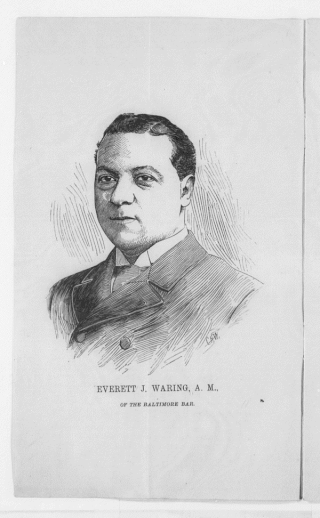
Everett J. Waring was the first African-American person admitted to the Maryland State Bar Association in 1885 and the Supreme Court Bench of Baltimore on October 10, 1885. He practiced before the Supreme Court of the United States and the Maryland State Appellate Court. He represented individuals involved in the Navassa Island riot of 1889, which occurred after African American men were lured to the island to gather guano to be used as fertilizer. The men were subject to inhumane treatment, low pay, and high cost of goods. He lost the Jones v. United States jurisdiction case and the men were found guilty.

Bishop Singleton T. Jones was a religious leader in the African Methodist Episcopal Zion Church. Although he had little education, Jones taught himself to be an articulate orator and was awarded the position of bishop within the church. Besides being a pastor to churches, he also edited AME Zion publications, the Zion's Standard and Weekly Review and the Discipline.
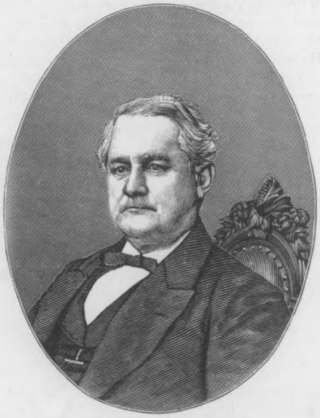
Charles Joseph Baker was an American politician, businessman and banker. He was Mayor of Baltimore temporarily during the American Civil War for 88 days, from October 1861 to January 1862. He was also known for running his family's glass, paints and oils business, Baker Bros. & Co. and serving as the president of Franklin Bank.
















